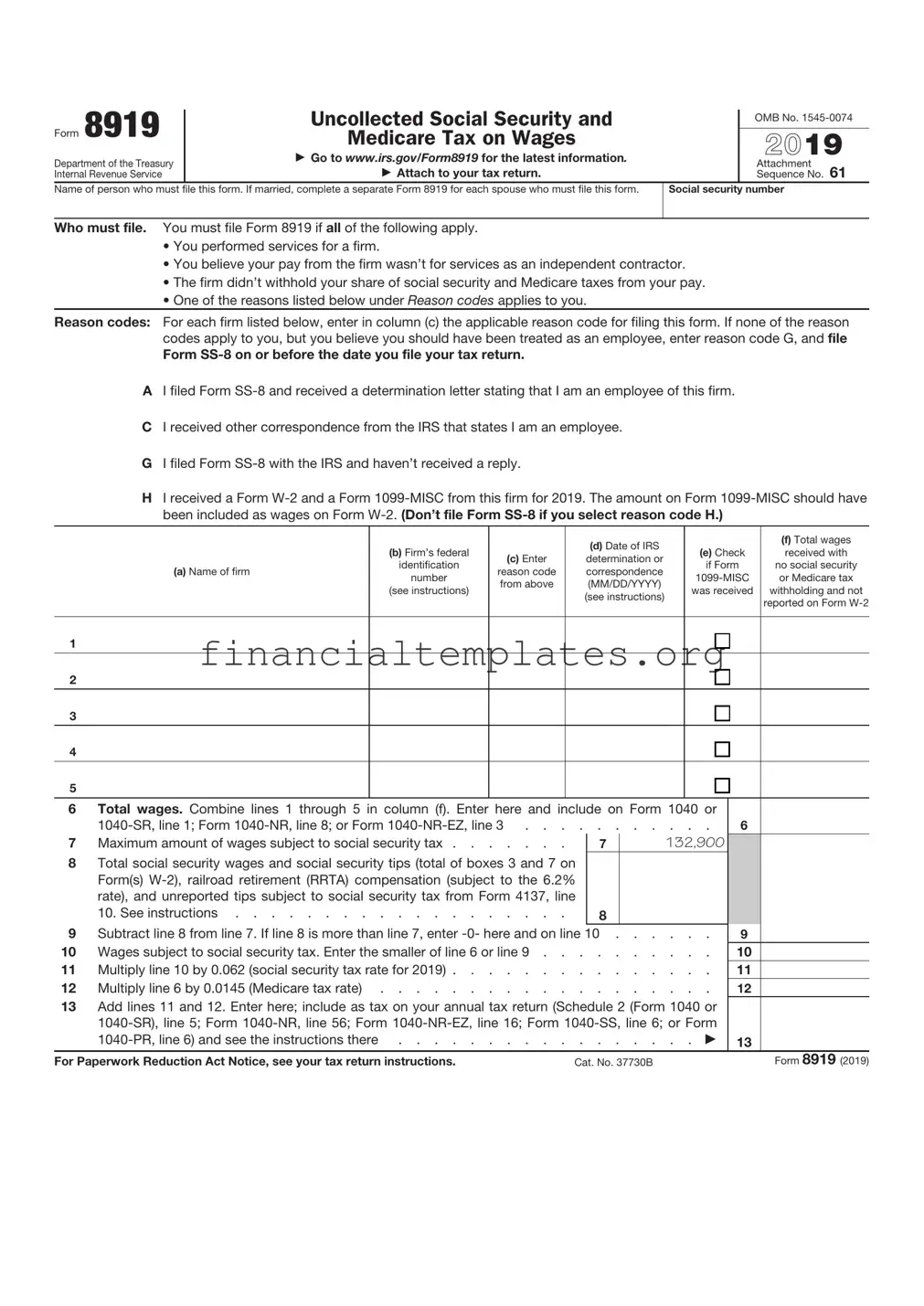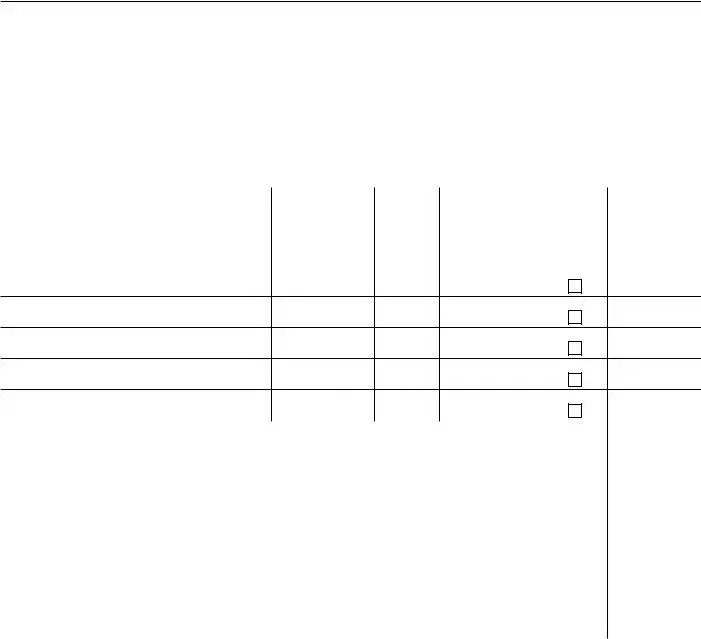The IRS 8919 form is closely related to the W-2 form. Workers typically receive a W-2 form from their employers. This form reports an employee's annual wages and the amount of taxes withheld from their paycheck. Similarly, the IRS 8919 form is used by workers who believe their employers have misclassified them as independent contractors rather than employees. Both forms are essential for accurately determining tax obligations and ensuring correct social security and Medicare contributions.
Another document related to the IRS 8919 form is the 1099-MISC form. Independent contractors, freelancers, and others who earn income outside of traditional employment might receive a 1099-MISC form from their clients. The key difference between this form and the IRS 8919 is that the latter is used to contest one's employment status. The 1099-MISC acknowledges non-employee compensation, while the 8919 seeks to reclassify the worker to receive employee benefits, including tax withholdings.
Form W-4 is also related to IRS 8919 in its role in the employment relationship. Form W-4 is completed by employees to indicate their tax situations to their employers, determining how much federal income tax should be withheld from their paychecks. While the W-4 form assumes employment status, the IRS 8919 challenges the absence of such status and its consequent withholding benefits, underscoring the worker's right to be recognized as an employee for tax purposes.
The Schedule SE form, used for reporting self-employment taxes, shares a connection with the IRS 8919 form. Individuals fill out Schedule SE to pay taxes on net earnings from self-employment, including Social Security and Medicare taxes. In contrast, the IRS 8919 form is used by individuals who believe they are incorrectly classified and should not be responsible for the self-employment tax rate, seeking instead to have taxes withheld by an employer.
Form SS-8 determines worker status for purposes of federal employment taxes and income tax withholding. Workers or firms may submit this form if they are uncertain about the worker's status as an employee or independent contractor. This determinative process directly relates to the context of the IRS 8919 form, which is used after a worker concludes they have been misclassified based on the criteria for employment.
The IRS Form 4852, a substitute for Form W-2 or Form 1099-R, is used when an employer or payer has not issued the original forms or when the issued forms are incorrect. Like the IRS 8919, Form 4852 deals with discrepancies in employment documentation that affect tax reporting and withholding calculations. It serves as a corrective measure for individuals to accurately report their earnings and taxes owed.
Form 1040, the U.S. Individual Income Tax Return, is the primary form used by individuals to file their annual income tax returns. It is indirectly related to the IRS 8919 form through the individual’s tax reporting process. While the 1040 form covers the broader filing of taxes, the 8919 form specifically addresses the issue of tax withholding due to employment misclassification, affecting how earnings and taxes are reported on the 1040.
The W-9 form, Request for Taxpayer Identification Number and Certification, is another document in the tax reporting process, used by companies to gather information from vendors, independent contractors, and other payees to prepare information returns (e.g., 1099 forms). While the W-9 assumes a non-employee status, the IRS 8919 questions and seeks to amend this status to that of an employee, highlighting a fundamental disagreement in worker classification.
Finally, the Form 940, Employer's Annual Federal Unemployment (FUTA) Tax Return, relates to the IRS 8919 form in the context of employer tax responsibilities. Form 940 is used by employers to report their annual Federal Unemployment Tax Act obligation. This form is pertinent because the reclassification of a worker from independent contractor to employee (via the IRS 8919) may affect an employer's FUTA responsibilities, reflecting the intertwined nature of employment classification and tax obligations.

